The Fortress of Cherven, Bulgaria
Northeastern Bulgaria might not be the first place that comes to mind for historical exploration, but just 35 km from Ruse lies one of the region’s most impressive medieval sites – the fortress of Cherven.
Perched above the village of the same name and surrounded by the wild beauty of the Cherni Lom River, this ancient stronghold has stood for over 1,500 years.
In this guide, I’ll walk you through Cherven’s fascinating past, how to get there, what to expect on your visit, and what else to explore nearby.
*Some of the links in this post are affiliate links. That means if you click through and book or buy something, I might earn a small commission – at no extra cost to you. It’s a simple way to support this blog (and maybe even my next banitsa or bus ticket across Bulgaria).
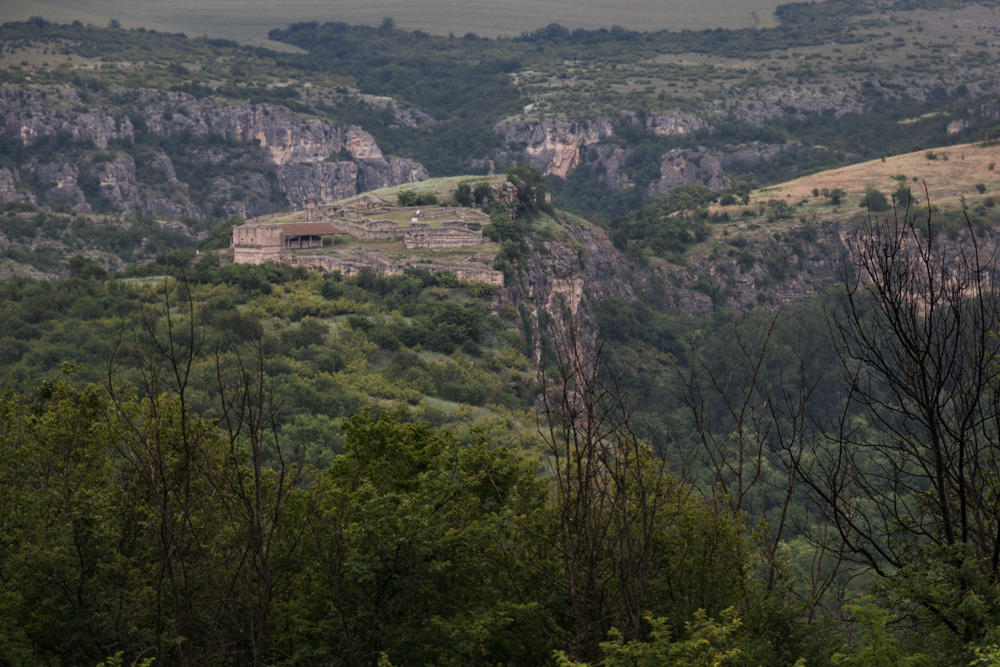
About Cherven
Tucked into the dramatic landscape of northeastern Bulgaria, the village of Cherven is a hidden gem for travelers who are drawn to nature, history, and off-the-beaten-path exploration.
Located along the banks of the Cherni Lom River, this quaint village is not just scenic – it’s steeped in layers of culture and mystery. The nearby cliffs, thick greenery, and the ever-moving river give it a wild, untouched charm that captivates visitors immediately.
Despite its modest size, Cherven offers a surprisingly rich experience, centered around its ancient fortress and the surrounding Rusenski Lom Nature Park.
It’s a place where the landscape speaks as loudly as the stones of the old walls, offering a perfect blend of natural beauty and historical depth.
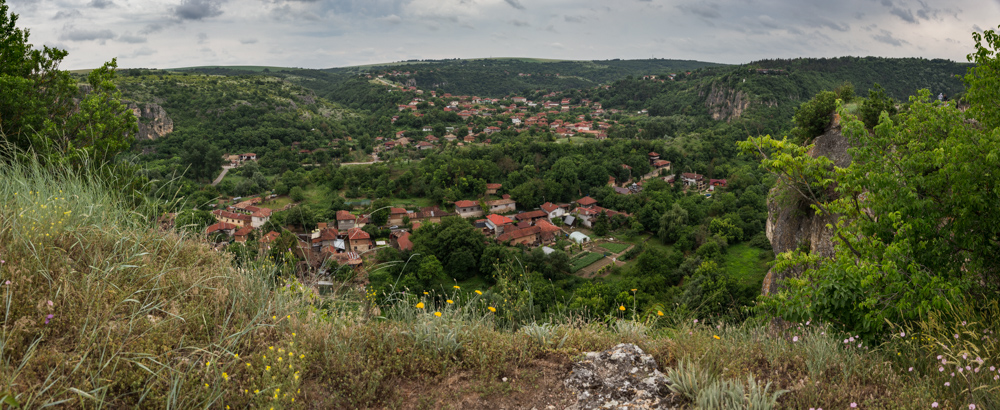
Location and how to get there
Cherven is located in northeastern Bulgaria, nestled within the lush Rusenski Lom Nature Park, approximately 35 kilometers south of the city of Ruse.
The journey to Cherven begins on the road from Ruse toward Sofia. After passing through the village of Ivanovo, you will reach a fork with signs pointing to Tabachka and Cherven – take the left turn. The road winds through scenic fields and the picturesque rock valley near Tabachka, a small village worth stopping to explore.
Continuing straight, the Cherven Fortress appears in the distance, rising above the fields like a silent sentinel. There’s a convenient roadside spot to pull over for photos before descending toward the village itself.
As you approach, the road dips and curves, bringing you past traditional Bulgarian homes and the village center, eventually leading you to the fortress entrance.
History of Cherven
The history of Cherven stretches back over 1,500 years and mirrors the broader narrative of Bulgaria’s rise, struggles, and transformations.
The fortress above the village was originally built in the 6th century during the reign of Byzantine Emperor Justinian I as part of a strategic defense system.
Later, during the First Bulgarian Empire (7th-11th century), Cherven gained significance, eventually becoming the second most important administrative and cultural center after the capital, Tsarevets.
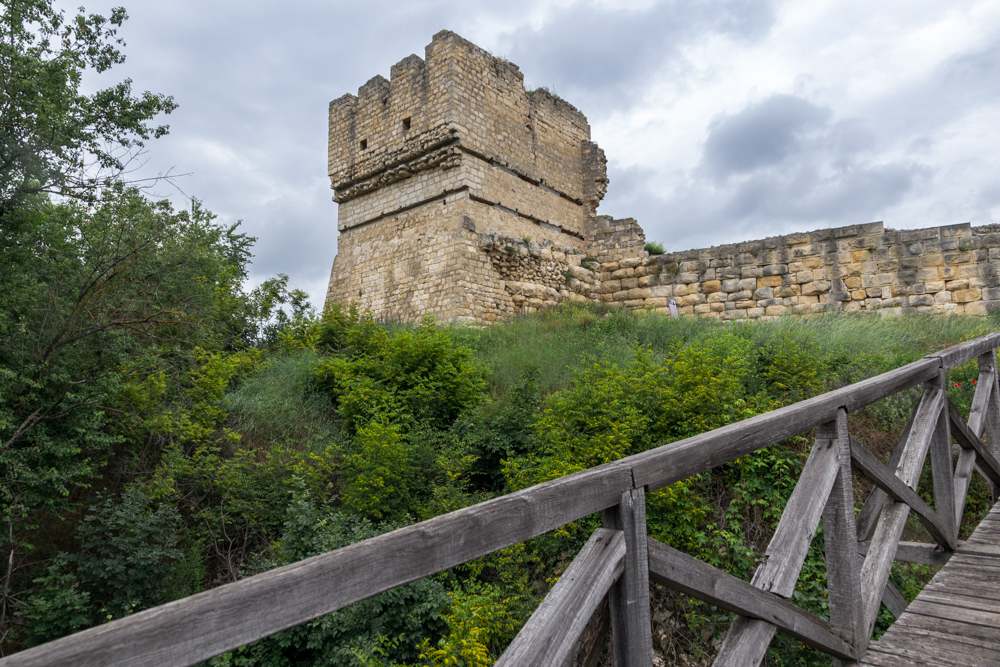
After 1235, it rose further in prominence as the seat of the Cherven Metropolitan bishops – highlighting its role not just militarily, but spiritually.
The medieval city was split into two parts:
- The upper, fortified area for the nobility (Boyars)
- The lower town along the river for commoners, merchants, and farmers.
Though its imposing walls were breached more than once, Cherven stood as a hub of governance, religion, and daily life for centuries.
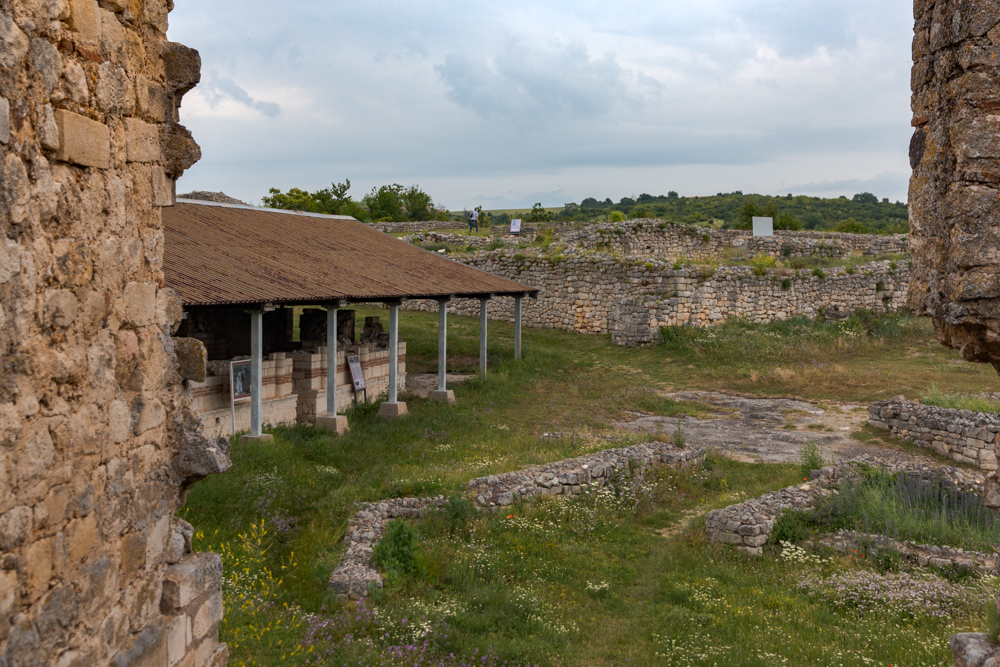
A tour of the medieval town of Cherven
Visiting the Cherven Fortress is like stepping into a living museum of Bulgaria’s medieval past. As with all historical landmarks, I recommend booking a guided tour so you can make the most out of your visit.
After a short break at the restaurant near the entrance – a modern addition for travelers – you begin your ascent via a gently inclined staircase.
As you climb, it becomes clear why this location was chosen by the Thracians and later fortified by empires: natural cliffs provide a perfect defense, fertile land stretches below, and the river offers a lifeline. Along the way, breathtaking views unfold across the valley, rivaled only by the impressive 10-meter-tall stone walls of the fortress, which still stand proudly despite having been breached over the centuries.
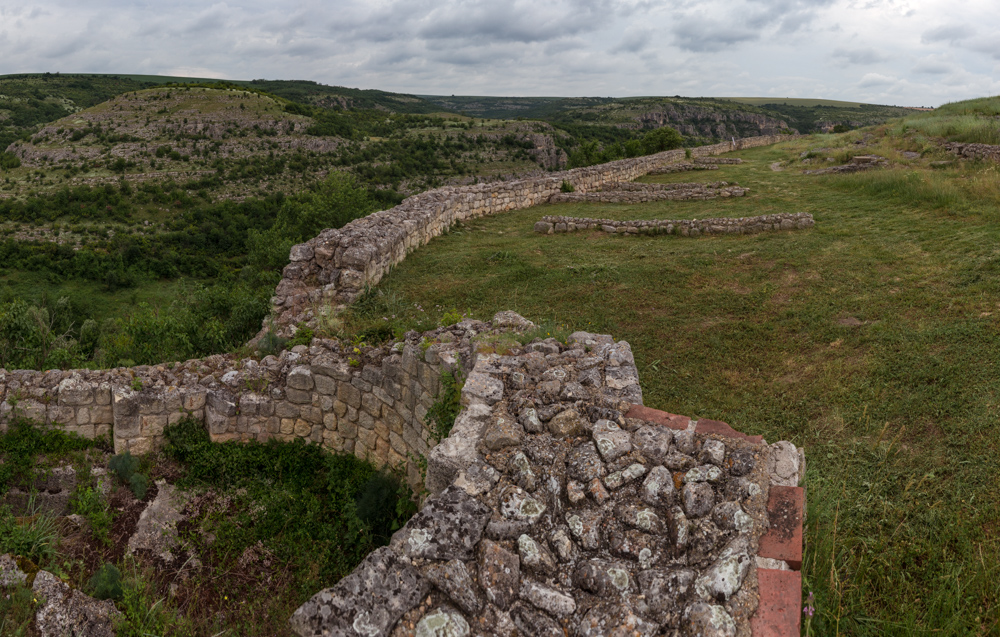
Once inside, the layout of the city begins to reveal itself.
On one side, dramatic cliffs overlook the river; on the other, you’ll see ruins of communal buildings, churches, towers, and the remains of a once-bustling medieval stronghold.
The main street leads to the castle and largest church, the heart of Cherven’s fortified core. Hidden tunnels carved into the cliffs once connected the fortress to the river below – vital during sieges and possibly used for ambushes or escape.
In May, history comes alive here with reenactments of medieval life, complete with blacksmithing, weaving, and battle demonstrations. Exploring the ruins and winding paths lets you imagine the daily rhythm of life centuries ago – each stone a silent witness to Bulgaria’s rich and turbulent past.
What to see nearby
The area surrounding Cherven offers a wealth of natural and historical attractions, making it an ideal destination for a full day – or even a weekend – of exploration.
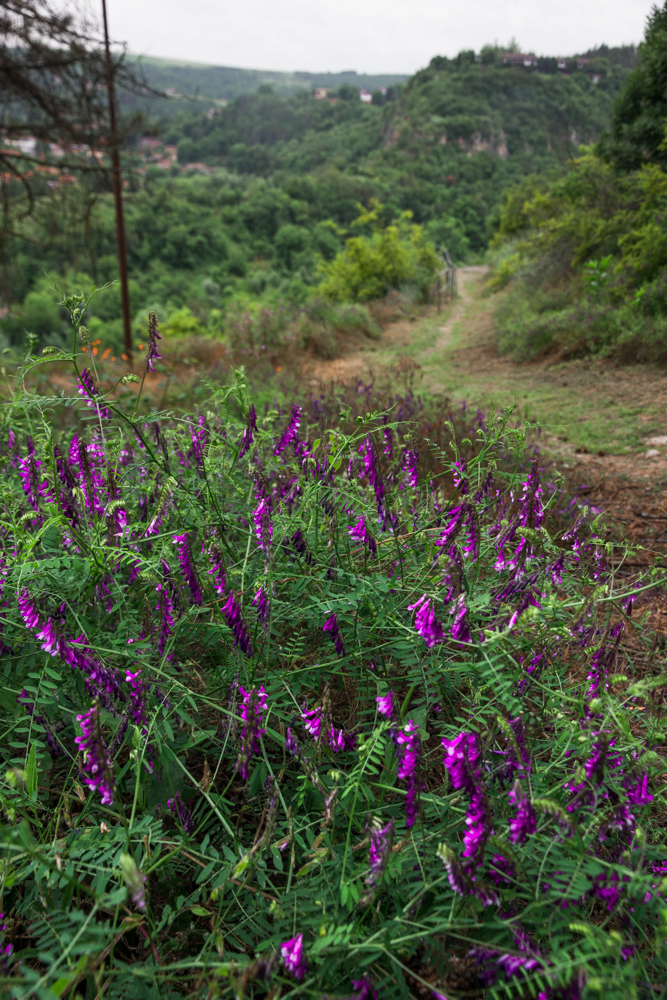
Just a short drive away, you’ll find:
- Tabachka: A little town nestled in a dramatic rock valley, perfect for nature lovers and photography enthusiasts
- Orlova Chuka Cave: One of the largest caves in Bulgaria, where visitors can delve into underground halls filled with fascinating formations
- Rock-Hewn Churches of Ivanovo: A UNESCO World Heritage Site famed for its medieval frescoes carved directly into the cliffs
- Basarbovo Rock Monastery: The only still-active rock monastery in Bulgaria, offering a tranquil and spiritual experience
- Gramovets Monastery: Accessible via an eco-trail from Ivanovo, it provides a scenic journey through nature and history.
Moskov Dol rock-hewn church and the Vetovo Eco Walk near Pisanets also offer peaceful outdoor escapes with a cultural twist.
Altogether, the region surrounding Cherven is a mosaic of rock-carved sanctuaries, wild landscapes, and timeless Bulgarian heritage.
